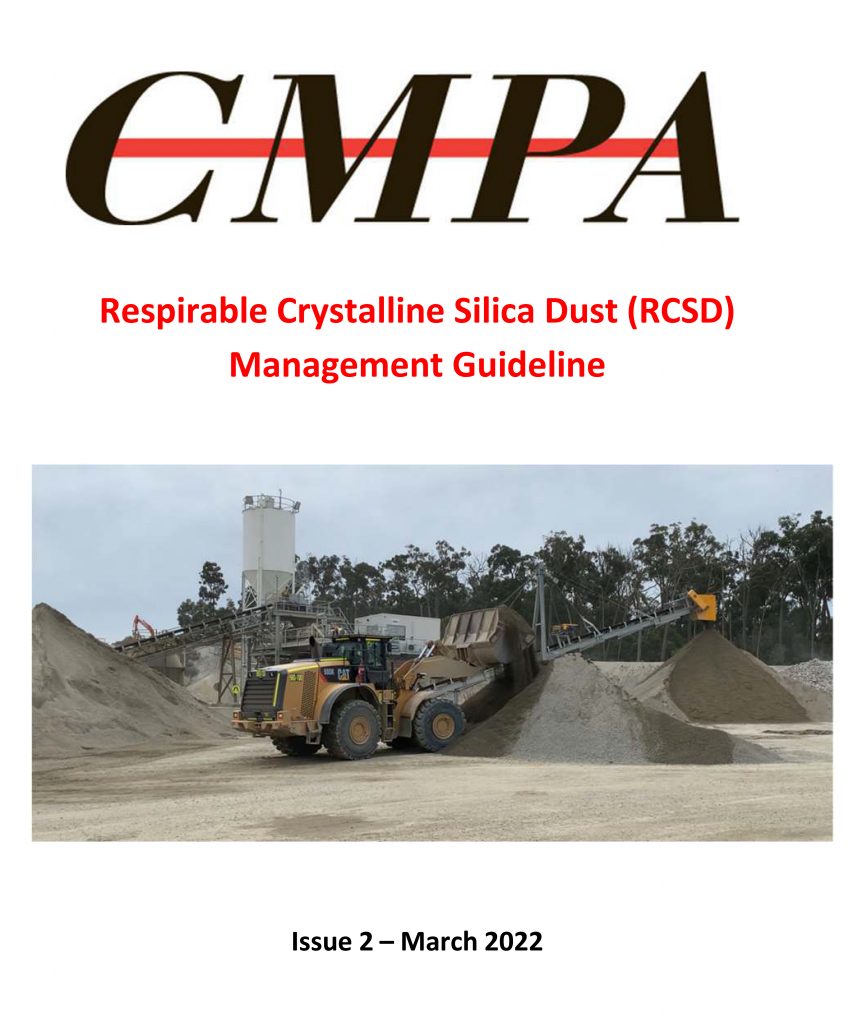National Silicosis Prevention Strategy and National Action Plan
CMPA submission made by DR ELIZABETH GIBSON, General Manager of the CMPA.
As community concern regarding silicosis escalates, Lung Foundation Australia, on behalf of the Australian Government Department of Health and Aged Care, has opened public consultation for a National Silicosis Prevention Strategy (NSPS) 2023-2028 and accompanying National Action Plan (NAP).
The draft NSPS and the NAP (https://lungfoundation.com.au/ advocacy/national-silicosis-prevention-strategy/consultationhub/), which is in response to Recommendation 3a of the National Dust Disease Taskforce’s Final Report to the Minister for Health and Aged Care (https://www.health.gov.au/sites/default/files/documents/2022/07/national- dust-diseasetaskforce-final-report.pdf), outlines urgent prevention strategies to protect Australian workers and to ultimately eliminate silicosis as an occupational disease in Australia.
The CMPA supports the principle of responsible, balanced legislation that is in the best interests of the State of Victoria and Australia including the protection of resources that enable extraction of construction materials that is cost efficient to market and to the Victorian taxpayer who is ultimately the end consumer and beneficiary of that resource.
General
The NSPS and NAP has been comprehensively written and if implemented correctly (taking issues raised in the submission below into account) should lead to the prevention and ultimately the elimination of silicosis as an occupational disease. Care should be taken to ensure that there is not a scatter gun approach and that the engineered stone industry should be the focus.
Submission
Descriptions of silicosis symptoms can be found in the literature since the time of ancient Egypt. Silicate minerals make up approximately 90% of the Earth’s crust so elimination of their use for infrastructure development is unattainable. However, elimination of silicosis is attainable through responsible regulation that includes education and training, realistic controls and Workplace Exposure Standards, health-monitoring, evidence of compliance and enforcement.
The NSPS would benefit from providing diagnosed silicosis cases differentiated by industry and year. For example, it is known in Victoria that there have been approximately 10 cases in the last 10 years related to working in quarries. 6 of those were due to the working in an enclosed area whilst milling sand (an outmoded practice).
Many of the proposed activities in the NAP are already in place in jurisdictions such as Victoria.
The NSPS and NAP must recognise the importance of NATA accreditation for the sampling of and method for determining the concentration of crystalline silica analytes. Inclusion of air monitoring results that have not been determined under NATA accreditation would render them meaningless especially as the action level 0.025 mg/m3 is at the current detection limit of the analytical method and equipment.
CMPA Silicosis Prevention Tools.
• Work Safely Reference Manual 2006.
• CMPA Respirable Crystalline Silica Dust Management Guideline (reviewed by WorkSafe Victoria and Occupational Hygienist)
• CMPA medical health screening forms (developed by Occupational Physicians):
Pre-employment
Periodic employment (silica)
Post employment
• On-line Silica awareness training module for employees
• Silica awareness information for potential employees
See www.cmpavic.asn.au for further details.
CMPA will continue developing separate environmental respirable crystalline silica dust (RCSD) management guidelines and templates in 2023.
Specific comments











You must be logged in to post a comment Login